12 Best Maksutov-Cassegrain Telescopes Worth the Money (2024)
It’s no secret that Maksutov-Casegrain is arguably the best beginner telescope out there.
The design corrects known optical problems such as coma (common in reflectors) and chromatic aberration (common in refractors).
The best Maksutov-Casegrain telescope has a large aperture, is easy to use, and is reasonably portable.
Best Maksutov-Cassegrain Telescopes
1. Sky Watcher Skymax 127 Maksutov-Cassegrain Telescope
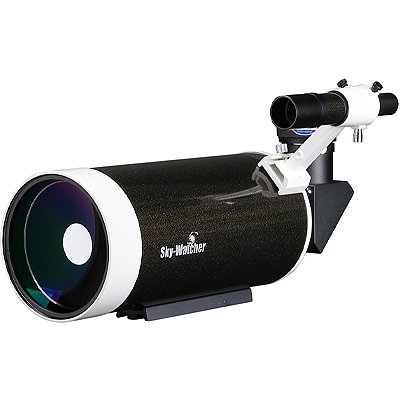
The Sky Watcher Skymax 127 Telescope is versatile, portable, and ideal for use when stargazing, as a lens for photography, and as a spotting scope. You get great value for money in these quality Cassegrain telescopes.
Using it for exploring the night sky, we saw fabulous views of the Orion Nebula, the rings of Saturn, and the red-tinge of Mars.
The moon appeared in crisp, sharp images, and we could make out the lunar landscape – a sight to send shivers down your spine!
This is one of the best Maksutov Cassegrain telescopes, with a 127mm aperture that certainly gave brighter views than the 90mm we reviewed. The lens gathers far more light and allows one to see fainter objects.
The mak 127 telescope comes with a 2” 90-degree star diagonal, a 28 mm 2” LET eyepiece and a 6 x 30 straight-through finder for easy centering of objects.
This Sky Watcher mak does not have a mount, which does mean that you need to spend extra to buy one. For easy attachment, there is a Vixen-style dovetail plate on these Maksutov telescopes that accommodates a wide variety of altazimuth or equatorial mounts.
What we liked
- 127mm aperture for stunning views
- Lightweight and portable
- Best Maksutov Cassegrain telescope for clear views and great color contrast
- 28mm 2″ LET eyepiece
- 2” 90-degree star diagonal
- 6 x 30 straight-through finder centering of objects
- Great as a spotter scope
What we didn’t like
- No mount
- No dew shield or carry bag
- Heavier than other models
Aperture: 127mm (5 inch)
Magnification: 50x
Focal length: 1500 mm
Focal ratio: f/12
Weight: 9.7 lbs. (4.4 kg)
Mount type: Not supplied
Features: Ideal for astronomy, as a photography lens, as a spotting scope
2. Sky Watcher Maksutov-Cassegrain 180mm Telescope
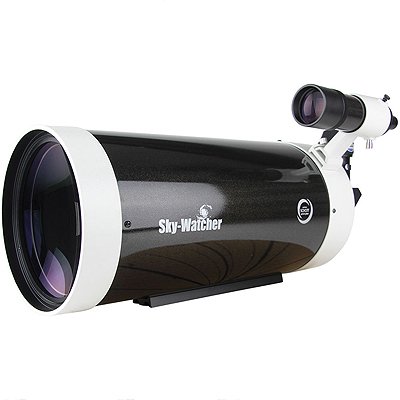
SkyWatcher 180mm Maksutov-Cassegrain has a focal ratio of f/15, which provides high contrast views of the planets and lunar landscapes, perfect for serious planetary imagers and visual observing.
With its 7” aperture, you can easily go deep-sky hunting with this one at amazing clarity and image sharpness.
Just maybe a bit longer exposure and/or more frames captured, you can have excellent results in DSO astrophotography. If the field of view is a bit narrower than usual, you can make a 2×2 or 3×3 mosaic for world-class nebula images.
Just pair this planet killer with a nice, steady mount, fine auto guider for longer exposures, and you’ll hunt down some of the best globular clusters and galaxies out there. Its build quality is at a very high level.
Just like the 6” version, this one is a dew magnet too, because of its large and tick-correcting frontal lens. For that reason, a dew shield heater is almost always needed for even the mildest climates.
The 2700 mm focal length requires very precise polar alignment, an autoguider if you go deep sky and high resolution, low noise camera. If you are considering to buy this one at the double the price over the 6” version, I guess you already know what wicked things you can do with it, besides the Moon craters and a Solar family album.
This fine scope fills a nice niche in both size and price between the 6″ refractors and 8″ SCT telescopes. With this 7” Mak, you are getting better contrast, better resolution, and better portability than both options at a lower price.
What we liked
- ‘The’ Planet Killer
- Enormous focal length at 2700 mm
- Excellent image quality
- Excellent image contrast
- High-quality optics
- Superb portability for 7” and f/15
- Small diameter of the secondary mirror
- Nice 8×50 finderscope
What we didn’t like
- Small aperture
- Slow thermal equilibrium
- Somewhat heavier weight
- Dew shield is a must
Aperture: 7” (180 mm)
Focal length: 2700 mm
Focal ratio: f/15
Weight: 19 lbs. (9 kg) – telescope only
Mount type: Not included
3. Orion StarMax 90mm TableTop Maksutov-Cassegrain Telescope
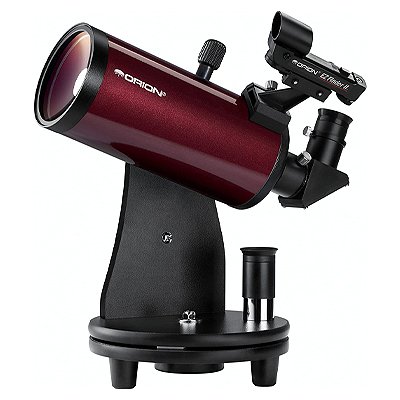
This grab-and-go mak cass telescope has a compact design that is ideal for traveling.
Weighing only 6.5 lbs, it is light enough to set up for a weekend trip, a country outing, or an evening in the garden.
It is perfect for an amateur astronomer, offering great value at an affordable price.
The Orion Maksutov Cassegrain telescope features a 90mm aperture and a 1250mm focal length.
It comes with two eyepieces, a 25mm, and a 10mm. The telescope has a secure heavy-duty base. Simply stand it on a table and you are ready to view.
If you prefer to use a tripod, it will easily attach to a field tripod with a 3/8″ or 1/4″-20 threaded post. Also included in the package is an EZ finder II reflex sight and a 90 degree mirror diagonal.
We used this Orion Maksutov telescope to see detailed images of craters on the Moon and rings of Saturn. The kids saw amazing views of the Great Red Spot of Jupiter. It was also great to view brighter deep sky objects like nebulas and globular clusters.
What we liked
- Great mak cass telescope for entry-level astronomers
- 90mm aperture
- Lightweight, easy to grab-and-go
- 2 eyepieces, 25mm and 10mm
- Sturdy table mount
- EZ finder II reflex sight
- 90 degree mirror diagonal
What we didn’t like
- Aperture a bit small for intermediate viewers
- Table mount is not for everyone
Aperture: 90mm (3.5 inch)
Magnification: 50x, 125x
Focal length: 1250 mm
Focal ratio: f/13.9
Weight: 6.5 lbs. (2.9 kg)
Mount type: Altazimuth table mount
Features: Ideal for a grab-and-go family outing
4. SkyWatcher Maksutov-Cassegrain 150mm Telescope
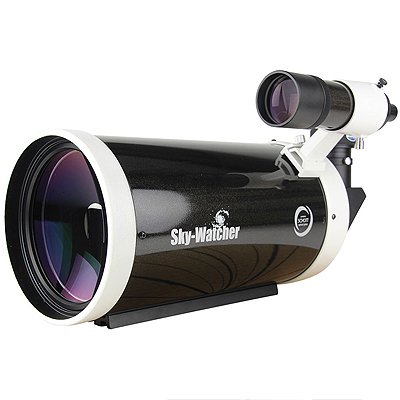
This is a serious scope; mechanically, it’s a very solid telescope with an amazing paint sparkly finish.
You’ll get very sharp details not just from Solar System objects but from some nebulae, star clusters, and galaxies.
As we know, these kinds of telescopes are great for planets, getting great details from that narrow field of view, on this scope, even globular clusters will shine brightly.
The standard focus on the scope is actually more precise than expected; it’s quite easy to use.
Obviously, it’s a single-speed focuser, so it’s not going to be what you need for fast focusing if you’re changing eyepieces constantly.
But for normal astrophotography use and otherwise, it’s a nice focuser to use. I must add up that the included 8×50 finderscope is very nice and sharp but without a 45° mirror diagonal.
The greatest drawback, in my opinion, is the slower thermal dissipation. You’ll have to wait 40 minutes to an hour in order to have a crisp, clear image. A dew shield is almost a must for this scope’s chunky frontal correcting lens.
What we liked
- Great focal length
- Excellent image quality
- High-quality optics
- Good value
- Great portability
- Small diameter of the secondary mirror
- Nice 8×50 finderscope
What we didn’t like
- Small aperture
- Slow(ish) thermal equilibrium
- Somewhat heavier weight
Aperture: 6” (150 mm)
Focal length: 1800 mm
Focal ratio: f/12
Weight: 14 lbs. (6.5 kg) – telescope only
Mount type: Not included
5. Celestron NexStar 4SE Maksutov-Cassegrain Telescope
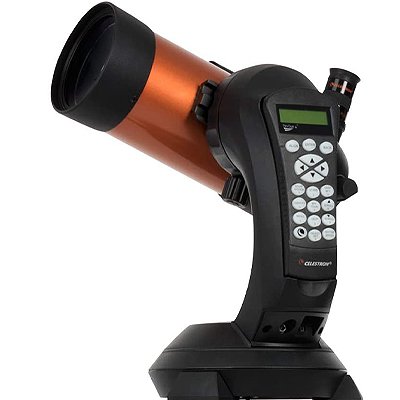
If you’re a beginner looking to get into the hobby of amateur astronomy, one of the things you’re going to need to help you get started is a telescope that’s easy to use and set up.
And if you’re an advanced amateur who’s been at this for a while well, then you want those features.
This telescope can meet both users’ needs, it doesn’t do everything perfectly, but it gets enough things right that this little scope can satisfy both classes of amateur astronomers.
This a good first-time telescope for Solar System objects, a lot of great detail like craters on the Moon, and it can be just fine for several of the brightest deep-sky objects, especially the globular star clusters.
Setting up this scope is very quick and easy. After 3 star alignment, you’ll have very precise guiding of the celestial objects that you are observing. The tripod is very steady, it might be an overkill for this size scope, but at least there are no vibrations during stargazing.
With its quick and portable setup, you’re ready to start observing in minutes. This system breaks down into three compact pieces. It does not require any tools, making it a breeze to transport to your favorite location.
What we liked
- Great focal length
- Sharp image
- Amazing GoTo mount
- Very steady tripod
- Declination wedge
- High-quality build
- Database with more than 40,000 celestial objects
- Free Starry Night software
- Easy alignment
What we didn’t like
- Small aperture for DSO
- Heavy mount
- Not good portability
Aperture: 4” (102 mm)
Focal length: 1325 mm
Focal ratio: f/13
Weight: 23 lbs. (10.5 kg)
Mount type: Altazimuth GoTo
6. Celestron AstroFi 102 Maksutov Telescope
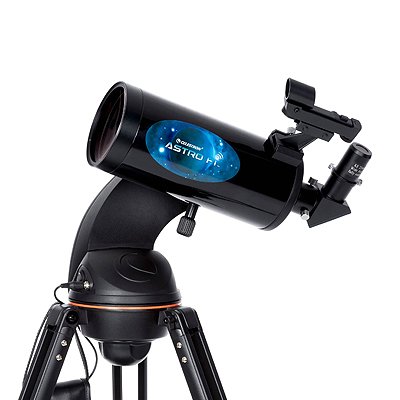
Controlling a mak telescope with a smartphone was a new and rather daunting experience for me, but my teen children rushed in, ready to get their fingers flying over the touchscreens.
The Celestron AstroFi 102 Telescope has a Maksutov-Cassegrain design, which means a shorter tube, lighter weight, and more portability.
More than that, these Celestron Maksutov scopes offer amazing views and great value for money.
The telescope comes with a 102mm fully coated glass optic lens. It has 2 eyepieces, a 25mm, and a 10mm. Also included is a star diagonal, a Finderscope, and an integrated smartphone adapter.
Using the integrated WiFi and the Celestron SkyPortal app for iPhone, iPad, and Android devices, we were able to easily control the scope. You simply center any 3 bright objects in the eyepiece, and the Cassegrain focus telescope calculates it automatically.
The fabulous views of planets, star clusters, nebula, and deep sky objects were super exciting. The tripod that comes with this Celestron Cassegrain is an altazimuth mount with adjustable height and a handy accessory tray.
What we liked
- 102mm aperture with fully-coated glass optics
- Lightweight and portable
- Best cassegrain telescope for clear views and great color contrast
- 2 eyepieces, 25mm and 10mm
- Altazimuth adjustable height tripod
- Integrated WiFi
- Celestron SkyPortal app
What we didn’t like
- Computerized telescope may not suit all users
- Learning curve for beginners
- Heavier than other models
Aperture: 102mm (4 inch)
Magnification: 15x, 241x
Focal length: 1500 mm
Focal ratio: f/13
Weight: 16 lbs. (7.25 kg)
Mount type: Altazimuth adjustable height
Features: Integrated WiFi and Celestron SkyPortal app
7. Celestron NexStar 90SLT Computerized Telescope
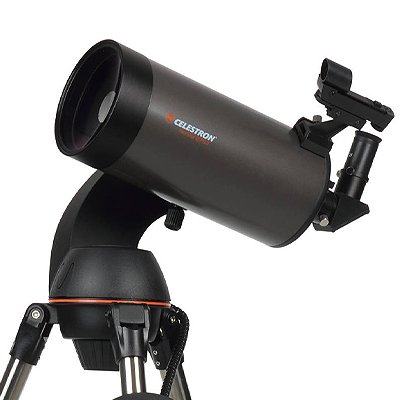
This maksutov scope is a very affordable option for entry-level to mid-level stargazers looking for a computerized GoTo mount.
Computerized mounts are great in that they track the celestial object for you as it moves across the sky.
The scope comes with SkyAlign which allows for fast and easy alignment.
We simply input the date, time and location into the hand control and focus on 3 bright objects. We were then set to start viewing!
The scope comes with a 90mm aperture and a 1250mm focal length for clear, crisp and bright views. It has 2 eyepieces, a 25mm and a 9mm.
The tripod is made of sturdy Stainless Steel Steel and is pre-assembled. It is also adjustable, great for getting the perfect height for the younger children.
Weighing only 12 lbs, this scope is ideal for traveling. It is powered by 8 AA batteries, eliminating the need for a power source when out in the open. The scope has a hand control that we can remove and hold, or leave in its holder for hands-free operation.
Seeing the polar caps of Mars and the phases of Venus is awe-inspiring. We also used it as a land scope and enjoyed spotting some beautiful birds.
What we liked
- Great value for money
- 90mm (3.5”) aperture
- 1250mm focal length
- Computerized GoTo mount
- Very easy setup with SkyAlign
- 2 eyepieces, 25mm and 9mm
- Can also be used as a spotting scope on land
What we didn’t like
- 90mm aperture may be too small for intermediates
- Some users want auto timekeeping
- Learning curve to get started
Aperture: 90mm (3.5 inch)
Magnification: 50x, 139x
Focal length: 1250 mm
Focal ratio: f/13.89
Weight: 12 lbs. (5.44 kg)
Mount type: Computerized GoTo Mount
Features: 2 eyepieces, land and sky viewing, great value for money
8. Celestron C90 Mak Spotting Scope
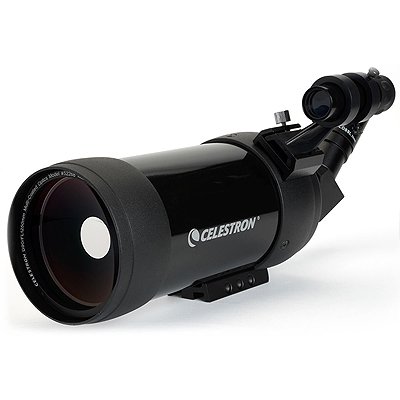
The Celestron C90 Mak Spotting Scope comes with a host of great features that made this one of the best Maksutov Cassegrain telescopes for sale.
It has a Maksutov-Cassegrain optical design with a 90mm aperture and a focal length of 1250mm.
The multi-coated optics gave us amazing clear views of planets: star clusters, deep-sky objects, and the moon.
Weighing only 4.62 lbs, this maksutov telescope is very portable and we took it along on the weekend away from the city lights for stargazing. The 45 degree angling of the eyepiece makes for more comfortable viewing. Even the smaller children got great views of the sky objects.
The Celestron c90 maksutov scope comes with a 32mm Eyepiece, a 45 degree Erect Image Diagonal and an 8X21 Erect Image Finderscope. The tripod is especially impressive, offering photographic and video functionality.
It has a 3-way pan head with quick release plate and a central column with a geared elevator and adjustable tension. These mak Cassegrain telescopes are ideal for both land and sky viewing. During the day, we used it to spot some rare birds!
What we liked
- Great maksutov newtonian telescope for entry-level astronomers
- 90mm aperture
- Multi-coated optics gave great images of dimmer objects
- 32mm Eyepiece
- 45 degree Erect Image Diagonal
- Comes with Photographic/Video Tripod
- Handy Nylon backpack
What we didn’t like
- Aperture a bit small for intermediate viewers
- Not waterproof
Aperture: 90mm (3.5 inch)
Magnification: 39x
Focal length: 1250 mm
Focal ratio: f/13.8
Weight: 4.62 lbs. (2 kg)
Mount type: Photographic/Video Tripod
Features: Great for celestial and terrestrial viewing
9. Orion 180mm Maksutov-Cassegrain Telescope Optical Tube
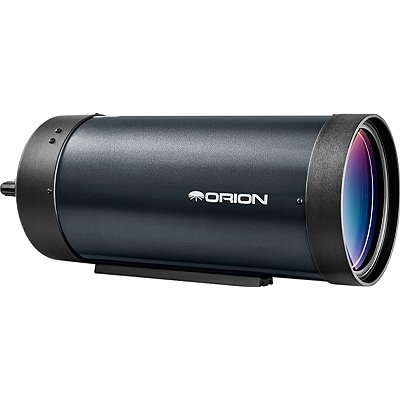
This is a powerful Orion 180mm Maksutov-Cassegrain telescope with a massive 180mm aperture and a high price!
If you are a serious stargazer and want a telescope to last for a lifetime, this is the investment you should make.
As a family of enthusiastic stargazers, we were super excited to try out the amazing power of the Orion 180mm Maksutov-Cassegrain Telescope Optical Tube.
For the power that it packs, it is extremely compact and weighs just under 16 lbs. It features a 2700mm focal length for stunning viewing and photographing of the solar system, Moon, and planets. It comes with a 2″ visual back and a 2″-to-1.25″ adapter, so we could use all our 2″ or 1.25″ accessories.
The scope does not come with its own eyepieces. One of the main Cassegrain telescope advantages is that the lens gathers enough light to resolve smaller deep-sky objects such as planetary nebulas and globular star clusters.
The optical tube comes without a mount, so that will be an additional expense if you are setting up for the first time. Choosing a computerized GoTo mount will give you exceptional viewing power on this Best mak cass telescope.
What we liked
- Massive 180mm (7.1”) aperture
- 2700mm focal length
- Compact and portable
- Incredible high-power views with this Maksutov-Cassegrain
- Internal focuser
- 2″-to-1.25″ adapter to fit standard accessories
- Astro-imaging capability – lunar, planetary, long exposure
What we didn’t like
- High price
- Not best for entry-level stargazers
- Has a learning curve to get started
Aperture: 180mm (7.1 inch)
Magnification: 67x, 300x
Focal length: 2700 mm
Focal ratio: f/15
Weight: 15.9 lbs. (7.10 kg)
Mount type: No mount
Features: Astrophotography, high-power views
10. Orion StarSeeker IV 150mm GoTo Mak-Cass Telescope
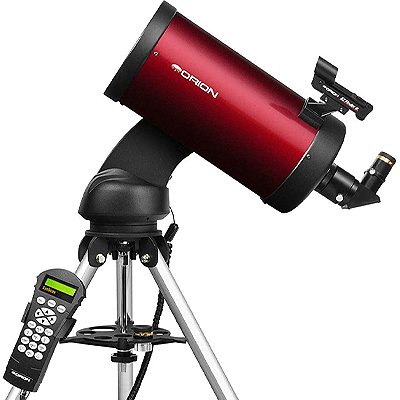
Orion Starseeker IV is a joy to use and to look at. From initially turning it on, setting your latitude and longitude, the time, the date, finding two stars, and then basically getting it calibrated to find the objects in the night sky just by pressing the GoTo function.
GoTo functionality requires power for the mount to work. You can use internal batteries, external power battery sources for longer life, or 12 V power supply, none of which are included.
I just can’t stand when you have to buy 8 new batteries just to use the GoTo option.
For astrophotography, I guess an external power supply is a must. Once aligned, there are encoders on both axes that allow manual pointing of the scope without losing GoTo alignment.
The brilliant deep red color is very nice and the paint job is of high quality. There is one red dot finder that is a lot more practical than a finderscope.
What we liked
- Great focal length
- Excellent image quality
- High-quality optics
- Huge database with 42,000 objects
- Good value
- Good portability for 6-inch scope
- Small diameter of the secondary mirror
- Two nice eyepieces included
- Lightweight
- Red dot finder
What we didn’t like
- 8 AA batteries
- Slow(ish) thermal equilibrium
Aperture: 6” (150 mm)
Focal length: 1800 mm
Focal ratio: f/12
Weight: 26 lbs. (12 kg)
Mount type: Altazimuth GoTo
11. Orion Apex 102mm Maksutov-Cassegrain Telescope
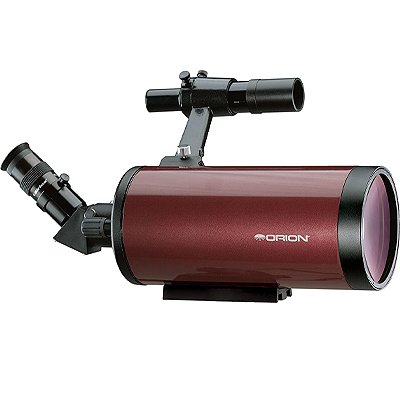
Now that the family is interested in stargazing, we got our hands on some fabulous Maksutov-Cassegrain telescopes to review.
Commonly known as Maks, this design offers a shorter tube and is great for sky objects that require high magnification.
The Orion Apex 102mm Maksutov-Cassegrain Telescope comes in a stylish burgundy color that caught my attention.
It is extremely compact and fits easily into a backpack. When not in use, we store our mak cass on a bookshelf! Despite the small size, it has the power of a traditional scope five times its size.
It is perfect for viewing planets, the Moon, double stars, nebulae, and global clusters. This Mak is also ideal for terrestrial viewing. My better half loves the sea and she had super fun watching ships on the horizon.
The Maksutov-Cassegrain telescope has a 102mm aperture and a focal length of 1300mm. It comes in a soft travel case with a 25mm Sirius Plossl 1.25″ eyepiece, a 45-degree correct-image diagonal, and a 6×26 correct-image Finderscope. This scope does not include a mount. You need to purchase the mount separately, which adds to the cost.
What we liked
- Well priced
- 102mm aperture for bright views
- 25mm Sirius Plossl 1.25″ eyepiece
- Great for viewing celestial and terrestrial objects
- Very compact Cassegrain telescope
- Soft carry case
- Stylish burgundy color tube
What we didn’t like
- Does not include a tripod or mount
- May not suit more professional stargazers
Aperture: 102mm (4 inch)
Magnification: 52x
Focal length: 1300 mm
Focal ratio: f/12.7
Weight: 5 lbs. (2.26 kg)
Mount type: Not supplied
Features: Great for celestial and terrestrial viewing
12. Meade Instruments LX65 5″ Maksutov-Cassegrain Telescope
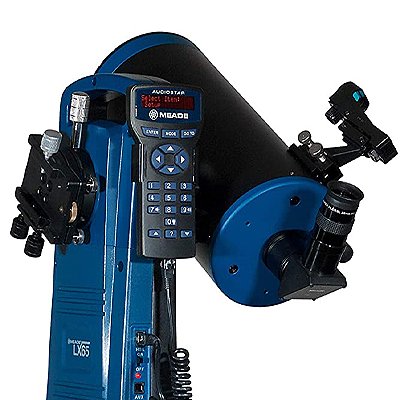
Meade’s 5-inch Mak scope combines advanced features and premium optics in an easy to use telescope system for everyone to enjoy.
It features a newly designed single arm mount with great, full of features hand controller. The hand controller has a database containing over 30,000 objects to observe.
There is a built-in speaker on the hand controller. You will be able to hear a lot of details about the objects you’re viewing.
This is a unique feature, but nowadays you have very cheap of free apps with a lot more comments and details about the celestial objects. This new mount is not that compact yet very sturdy, providing a great combination of portability and performance.
Additionally, the versatile setup includes two dovetail receivers, giving you the ability to use two of your best telescopes at once, giving you a chance to use two different scopes for astrophotography.
As they say at Meade, making your experience twice as enjoyable! Just remember that the mount is alt-azimuth and wedge is not even designed for use with this system. So you have to stick to the Solar System.
The biggest drawback is the power supply. You must use eight C-size batteries, or you have a possibility for 12 V external power source that is not included.
What we liked
- Amazing focal length at 1900 mm
- Ultra-sharp image quality
- Amazing GoTo alt-az mount
- 30,000 object database
- 4 hours of objects audio content
- 2 dovetail receivers
- Very steady tripod
- Built-in speaker AudioStar
- High-quality build
- Nice servo motors
- Ease of use
What we didn’t like
- Somewhat smaller aperture
- Heavy setup
- Not good portability
Aperture: 5” (127 mm)
Focal length: 1900 mm
Focal ratio: f/15
Weight: 34.2 lbs. (15.5 kg)
Mount type: 2 X Altazimuth GoTo
Also read:
- 5 Best DSLR for Astrophotography (2020)
- 5 Best Star Trackers for DSLR in 2020 [Buyer’s Guide]
- 5 Best Solar Telescopes in 2020 [to Observe The Sun]
Maksutov-Cassegrain vs. Schmidt-Cassegrain
Maks vs. SCTs… Since both use mirrors as primary optics, the main and the most important difference between Maksutov-Cassegrains telescopes (Mak) and Schmidt-Cassegrain telescopes (SCT) is the design and curvature of the frontal lens of the telescope and the curvature of the secondary mirror, the former and the latter are parts of the ‘correcting lens.’ Both telescopes use spherical mirrors, which cause spherical aberration.
The frontal, correcting lens is designed to eliminate that optical distortion at a relatively lower price compared to the SCT. SCTs use just slightly aspheric, almost flat lens, while the Maks have a highly curved spherical lens. Although the simpler design of the Maks uses a much ticker glass lens, because of that it takes more time to achieve thermal equilibrium with the surroundings, especially with larger size scopes.
The second difference that shouldn’t be considered as a drawback is the design of the secondary mirror. Maks use a lot simpler and less expensive method. The secondary mirror is just a metalized center portion of the glass from the correcting lens. Larger aperture Maks instead of metalized spots, they use a bracket holder for the secondary mirror that performs better. For SCTs, the center portion of the correcting lens is cut and placed a much better and more optimized curved (convex) mirror.
Mak’s design always has longer focal ratios than SCT telescopes, making them far better for photographing the Moon and the planets and less convenient for the usually larger and fainter deep-sky objects (DSO).
I guess for the consumers, the main question is whether they would like to optimize for the Solar System astrophotography, the more mysterious deep-sky astrophotography, or you can use them as high-quality optics even for terrestrial observing and photographing.
The good and bad of Maksutov-Cassegrains
Smaller sized Maksutov-Cassegrains telescopes are perfect for beginners, hence their popularity. You can get a small, portable, long focal length, high-end optics telescope with GoTo motorized mount at a very reasonable price.
The price of higher quality, larger Maksutov-Cassegrains telescopes will not be much lower than an equivalent performance refractor telescope, but it will be a lot more portable, and because of the lower weight, you can use less expensive mount.
Though I have mentioned that the Maks, because of their ticker frontal lens, takes longer to achieve thermal equilibrium with the surroundings, they are still better than the refractor telescopes, and most of them have internal fans for dissipating the heat.
Large size Maks are not that common because you can still use them only for Solar System astrophotography and observing. Unlike the similar priced SCTs that can be used for DSO as well as Solar System astrophotography while having similar optical quality. Also, their secondary mirrors are a lot smaller than SCT; because of that, they have a lot better light gathering capabilities.
Have I mentioned that you don’t have to look for dark skies for using these scopes? Yes, just because of their abilities to observe the brightest celestial objects, you shouldn’t run away from the light pollution of the city lights.
What can you observe with a Maksutov-Cassegrains?
With smaller factor Maks you can photograph the Solar System objects as well as excellent visual observation like Saturn’s rings and the Cassini division in them, Jupiter’s equatorial bands, Jupiter’s Great Red Spot, the Galilean moons and the magnificent lunar landscapes, Moon’s craters with always-changing shadows on them.
The smaller, terrestrial planets are also very good for observing with these telescopes. You can observe the polar caps on Mars, some surface features, Venus’ phases, and of course, the smallest of them all, Mercury as a pale dot. The outer ice giants are also an easy target for Maksutov-Cassegrains telescopes, but those are just bright, deep-blue, slightly larger pricks on the sky.
Yes, you can observe some parts of the brightest DSO, but at a focal ratio of f/12 some are f/15; those objects are going to be very faint. For DSOs, you’ll need an aperture of more than 6”.
For terrestrial observing, you can have the benefit of longer focal ratios, hence higher magnification of neighboring and sky-line objects. If you have nice cityscape scenery out of your window or you are witnessing amazing nature from your country villa, then you can use the smaller versions of these scopes for your daytime leisure as well.
How to choose the best Maksutov-Cassegrains telescope?
If planet astrophotography is your thing, then this is the scope design for you. These are the “Planet Killers” for sure. They are cheap and affordable on the low-end and very reasonably priced at the high end of the spectrum. Because of their narrow purpose of planet ‘hunting’, I’ll try to focus and describe its performances just through that specific field.
Aperture – The wider the aperture is, the more light you’ll capture the shorter exposition you can make. For visual observing and astrophotography, 4 inches are just fine.
Focal ratio – The larger its ratio is, the sharper image you’ll get. Unfortunately, at large focal ratios, you’ll have a much fainter image.
Field of view – The field of view is the circle of sky visible through the eyepiece. Different eyepieces will give you wider or narrower fields of view.
Magnification – You can easily calculate the magnification by dividing the focal length of the scope with the focal length of the eyepiece.
Mounts – There are two basic mount designs. Altazimuth and equatorial mounts, they can be motorized or manually operated depending on the general purpose. Most of the Maks come with altazimuth motorized GoTo mounts.
Portability – This is quite an important factor. Portability can sometimes mean the difference between using it once a year and every week.
Frequently asked questions
Are Maksutov Cassegrain telescopes good?
Yes, Maksutov Cassegrain telescopes are good for all levels of home stargazers. Whether you choose an Orion, a Celestron, or a meade Maksutov, they all offer incredible value for money. They are easy to set up and the shorter tube design makes for easy transporting.
What is the difference between Maksutov Cassegrain and Schmidt Cassegrain?
The primary difference is the structure and design of the mirrors. Schmidt Cassegrain telescopes have a thin corrector lens with a complex shape. Maksutovs have a thick spherical corrector lens. The secondary mirror in a Schmidt is a normal mirror. In Maksutovs it is a small aluminized spot. Schmidts generally have bigger apertures and cost more than Maksutovs.
How do you collimate a Maksutov Cassegrain telescope?
Most Maksutov Cassegrain telescopes are properly aligned at the factory. As a home user you won’t need to make any adjustments. These scopes are designed for easy use, so you will not need to collimate your telescope.
What are Cassegrain telescopes used for?
Cassegrain telescopes are ideal for home users. You can view celestial objects like the moon, planets, star-clusters, nebula, and deep-sky objects. More advanced models offer astrophotography functionality.

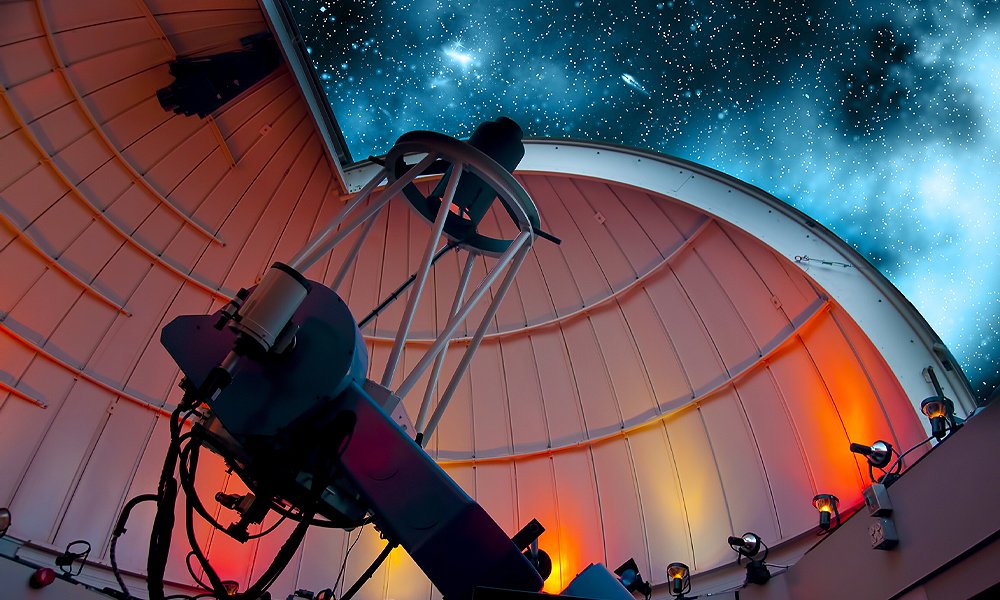



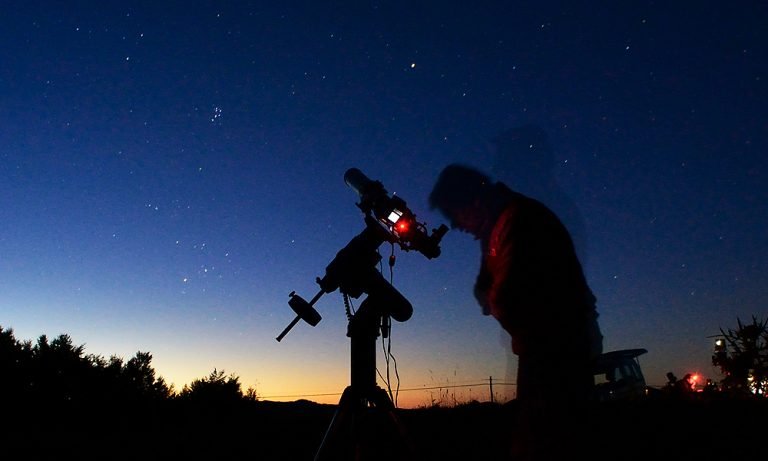
![12 Best Travel Telescopes in 2024 [Portable & Durable]](https://www.planetguide.net/wp-content/uploads/2019/12/best-travel-telescope-768x461.jpg)
![10 Best Telescopes Under 0 [in 2024]](https://www.planetguide.net/wp-content/uploads/2020/06/Depositphotos_273495332_s-2019-768x499.jpg)
![12 Best Beginner Telescopes in 2024 [Actually Simple to Use]](https://www.planetguide.net/wp-content/uploads/2020/06/rfe-768x488.jpg)
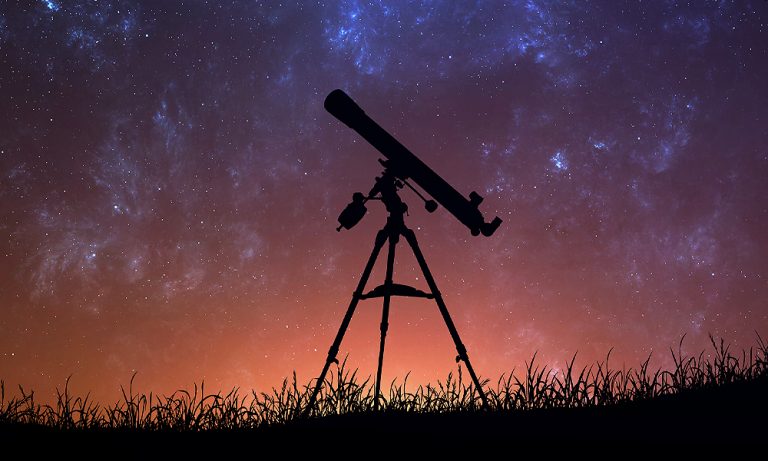
![12 Best Telescopes for Deep Space Objects [2024]](https://www.planetguide.net/wp-content/uploads/2019/12/Depositphotos_144986289_l-2015-768x512.jpg)